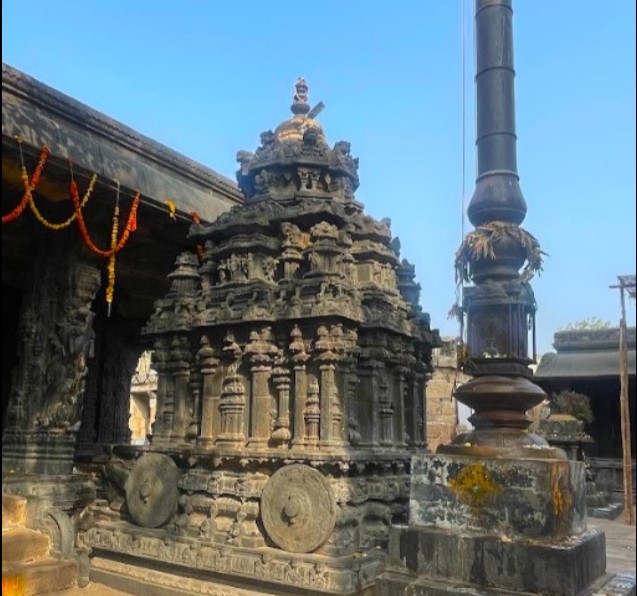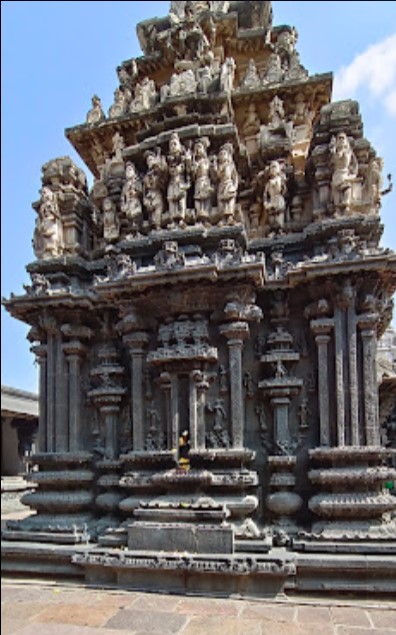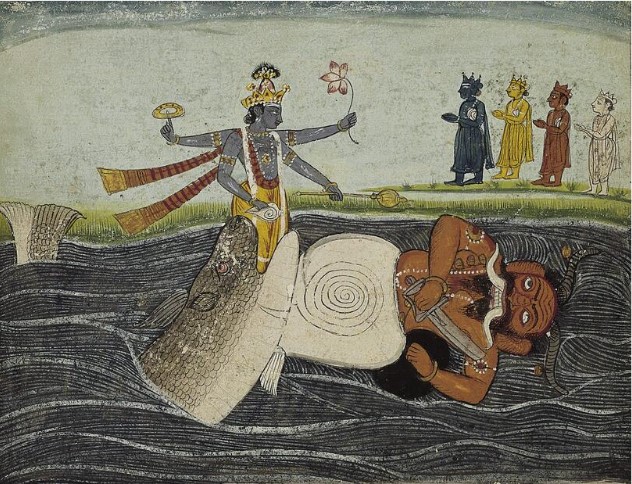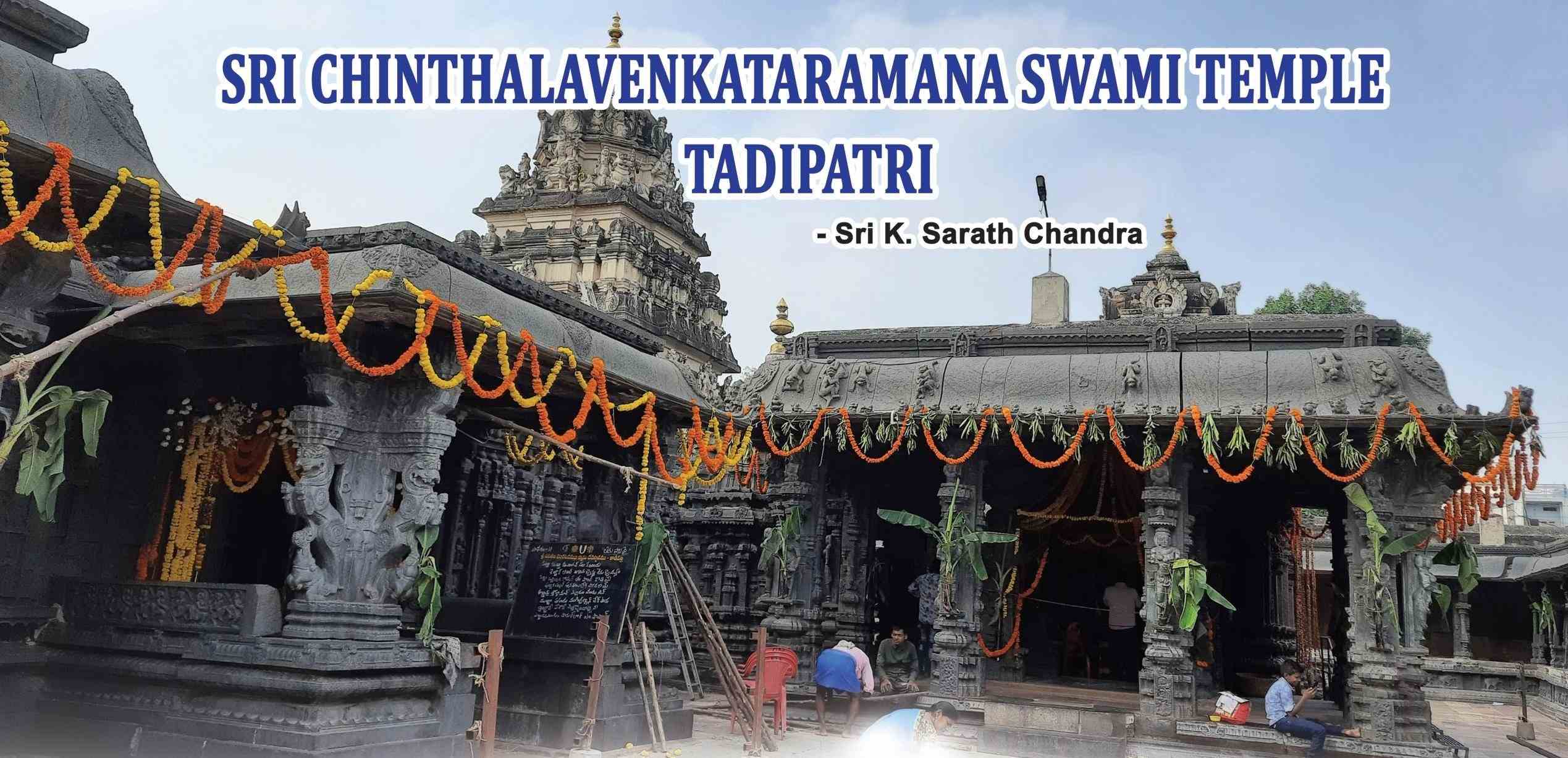Sri Chinthala Venkataramana Swamy Temple
Sri Chinthalarayaswamy Temple or Sri Chinthala Venkataramana Swamy Temple is situated at Tadipatri, a town in the Anantapur district of Andhra Pradesh. The temple is dedicated to Lord Venkateswara, who is referred to as Chinthala Venkataramana.
Sthalapurana
According to a legend, it is said that once a huge noise burst out from a tamarind tree and when the villagers gathered to find out the source of the noise, they saw an idol of Lord Vishnu, which had erupted from the tamarind tree. Later that night, Lord Vishnu appeared in the dream of Thimma Nayudu, the ruler of the region, and instructed him to build a temple by placing the idol found inside the tamarind tree.
The temple was named after the tamarind tree, as ‘Chintha’ in Telugu means ‘Tamarind’. Chinthala in Telugu means that this deity will remove worries.
Inscriptions
The earliest inscription in the temple is dated 1551 and registers gifts to the temple. There are other inscriptions belonging to the 16th and 17th centuries.
Builder of the temple
Sri Chinthala Venkataramana Swamy Temple was built by Pemmasani Yerra Thimma Nayudu II of the Pemmasani Nayaks (son of Thimma Nayudu), a subordinate of Sri Krishnadeva Rayalu during the reign of the Vijayanagara Empire in the 16th century. Thimma Nayudu appointed two archakas and a chief priest and he gifted lands to the temple.
Originally the temple was called Chinthala Tiruvengala Natha Swamy Temple. Spread across five acres of land, this temple was built according to the Silpa Sastras.

Mandapas
The carvings of episodes of the Ramayana, the Mahabharata, and the Bhagavatha are seen around the Garbha Griha, Ranga Mandapa, Mukha Mandapa, Main Gopura, and the Prakaras. The Mukha Mandapa has 40 pillars in the Vijayanagara style. Beyond the Mukha Mandapa is a Ranga Mandapa, which has scenes of the Ramayana and rare sculptures of the Vishnu avatars or incarnations.
Temple Complex
There are other temples inside the complex, one dedicated to Goddess Lakshmi worshipped as Anandavalli Thayar, Lakshminarayana, Varaha, and the other to Lord Anjaneya. There is a shrine for Sri Ramanuja Acharya, the founder of Vishishta Advaitha philosophy.
Three Entrances
The temple has three entrances – one each on the North, South, and East. On the East, is the Dhwaja Stambham. The sculptures of the river goddesses – the Ganga and the Yamuna are prominently displayed on either side of the entrance.
The rajagopuram faces the east and is a solid structure, built using stone and brick. The stone part contains figures of Vidyadharas, Apsaras and Avatars, Elephants, Horses, and parrots arranged on different levels.

Important festivals in the temple
The important festivals held in this temple are Diwali, Sri Rama Navami, and Brahmotsavam which falls in October. A mighty temple gopuram greets the visitors and the devotees. Right after it is the Dhwajasthamba and then comes the Garuda mandapa. Right in front of the Garuda Mandapa is the large Mukha Mandapa followed by the Ranga Mandapa and the Garbha Griha.
Garbha Griha
The presiding deity of the temple in the Garbha Griha is a 10-foot-tall idol of Lord Venkateswara. It is very beautiful and a classic example of a masterpiece of the Vijayanagara architecture. Lord Venkateswara is in a standing position and is holding the Sankha (conch) and Chakra (Discus) in the upper left and right hands. The lower right hand is in abhaya hasta (reassuring the devotees) and the lower left is in kati hasta (resting on the waist).
The ceiling in the main temple is an octagonal-shaped flower. The Mukha Mandapa and the Ranga Mandapa are full of images and stories from the Mahabharatha, the Ramayana, and the Bhagavatha, all in proper sequence of events. It is certainly one of the highlights of this temple as each pillar tells beautiful stories through its intricate carvings.
One of the rare sculptures in the Ranga Mandapa is the Matsya (fish) incarnation of Vishnu killing the demon Hayagreeva.

Every inch of the exterior walls of the temple are carved and each carving tells us a lot about our gods and our puranas. The temple is famous for sculpture and is classified as one of the Monuments of National Importance by the Archaeological Survey of India. The temple occupies a pride of place in the history of Indian art and architecture.
Every Indian must preserve and protect it for the sake of the future generations.

